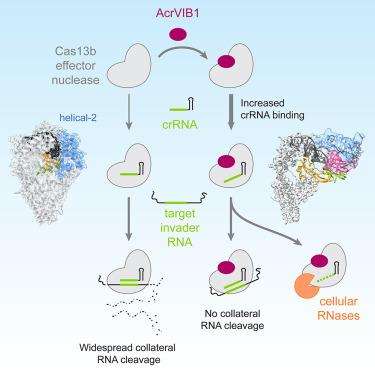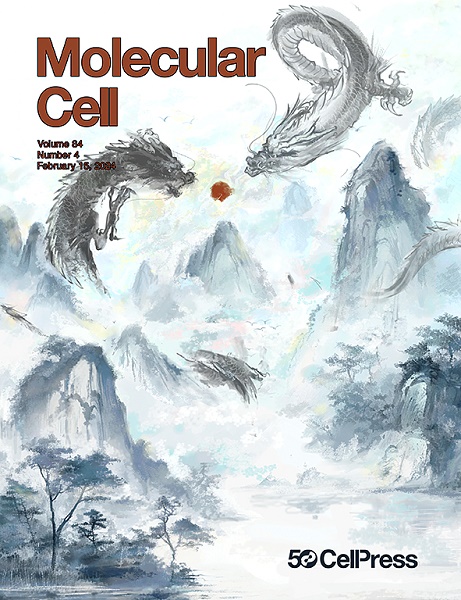AcrVIB1 inhibits CRISPR-Cas13b immunity by promoting unproductive crRNA binding accessible to RNase attack
IF 14.5
1区 生物学
Q1 BIOCHEMISTRY & MOLECULAR BIOLOGY
引用次数: 0
Abstract
Anti-CRISPR proteins (Acrs) inhibit CRISPR-Cas immune defenses, with almost all known Acrs acting on the Cas nuclease-CRISPR (cr)RNA ribonucleoprotein (RNP) complex. Here, we show that AcrVIB1 from Riemerella anatipestifer, the only known Acr against Cas13b, principally acts upstream of RNP complex formation by promoting unproductive crRNA binding followed by crRNA degradation. AcrVIB1 tightly binds to Cas13b but not to the Cas13b-crRNA complex, resulting in enhanced rather than blocked crRNA binding. However, the more tightly bound crRNA does not undergo processing and fails to activate collateral RNA cleavage even with target RNA. The bound crRNA is also accessible to RNases, leading to crRNA turnover in vivo even in the presence of Cas13b. Finally, cryoelectron microscopy (cryo-EM) structures reveal that AcrVIB1 binds a helical domain of Cas13b responsible for securing the crRNA, keeping the domain untethered. These findings reveal an Acr that converts an effector nuclease into a crRNA sink to suppress CRISPR-Cas defense.

求助全文
约1分钟内获得全文
求助全文
来源期刊

Molecular Cell
生物-生化与分子生物学
CiteScore
26.00
自引率
3.80%
发文量
389
审稿时长
1 months
期刊介绍:
Molecular Cell is a companion to Cell, the leading journal of biology and the highest-impact journal in the world. Launched in December 1997 and published monthly. Molecular Cell is dedicated to publishing cutting-edge research in molecular biology, focusing on fundamental cellular processes. The journal encompasses a wide range of topics, including DNA replication, recombination, and repair; Chromatin biology and genome organization; Transcription; RNA processing and decay; Non-coding RNA function; Translation; Protein folding, modification, and quality control; Signal transduction pathways; Cell cycle and checkpoints; Cell death; Autophagy; Metabolism.
 求助内容:
求助内容: 应助结果提醒方式:
应助结果提醒方式:


